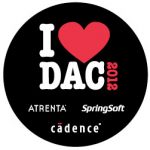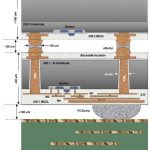Atrenta is having a special offer to let you “spring clean” your IP for free. They are providing two weeks of free access to the Atrenta IP kit starting from today, April 16th, until the end of May. During this period, qualified design groups in the US will be able to use the kit for two consecutive weeks to “spring… Read More
Electronic Design Automation
High Yield and Performance – How to Assure?
In today’s era, high performance mobile devices are asserting their place in every gizmos we play with and guess what enables them work efficiently behind the scene – it’s large chunks of memory with low power and high speed, packed as dense as possible. Ever growing requirement of power, performance and area led us to process nodes… Read More
Chip in the Clouds – "Gathering"
Cloud computing is the talk of the tech world nowadays. I even hear commentaries about how entrepreneurs are turned down by venture capitalists for not including a cloud component into their business plan no matter what the core business may be. The commentary goes “It’s cloudy without any clouds.” Add some clouds to your strategy… Read More
I Love DAC
For the fourth year Atrenta, Cadence and Springsoft are jointly sponsoring the “I LOVE DAC” campaign. In case you have been hibernating all winter, DAC is June 3-7th in San Francisco at the Moscone Center.
There are two parts to “I LOVE DAC”. First, if you register by May 15th (and they haven’t all… Read More
EDPS: 3D ICs, part II
Part I is here.
In the panel session at EDPS on 3D IC a number of major issues got highlighted (highlit?).
The first is the problem of known-good-die (KDG) which is what killed off the promising multi-chip-module approach, perhaps the earliest type of interposer. The KDG problem is that with a single die in a package it doesn’t… Read More
Doing what others don’t do
Wally Rhines’ keynote at U2U, the Mentor users’ group meeting, was about Mentor’s strategy of focusing on what other people don’t do. This is partially a defensive approach, since Mentor has never had the financial firepower to have the luxury of focusing all their development on sustaining their products and then make … Read More
Cadence support for the Open NAND Flash Interface (ONFI) 3.0 controller and PHY IP solution + PCIe Controller IP opening the door for NVM Express support
The press release about ONFI 3.0 support was launched by Cadence at the beginning of this year. It was a good illustration of Denali, then Cadence, long term commitment to Nand Flash Controller IP support. The ONFI 3 specification simplifies the design of high-performance computing platforms, such as solid state drives and enterprise… Read More
Analog Automation – Needs Design Perspective
Recently I was researching the keynote speeches of isQED (International Society for Quality Electronic Design) Symposium 2012 and saw the very first, great presentation, “Taming the Challenges in Advanced Node Design” by Tom Beckley, Sr. VP at Cadence. I know Tom very well as I have worked with him and I admire his knowledge, authority… Read More
EDPS: 3D ICs, part I
The second day (more like a half-day) of EDPS was devoted to 3D ICs. There was a lot of information, too much to summarize in a few hundred words. The keynote was by Riko Radojcic of Qualcomm, who has been a sort of one-man-band attempting to drive the EDA and manufacturing industries towards 3D. Of course it helps if you don’t … Read More
MEMS and IC Co-design
This morning I attended a webinar about MEMS and IC co-design from a company called SoftMEMS along with Tanner EDA. I learned that you can co-design MEMS and IC either in a bottom-up or top-down methodology, and that this particular flow has import/export options to fit in with your mechanical simulation tools (Ansys, Comsol, Open… Read More












Quantum Advantage is About the Algorithm, not the Computer